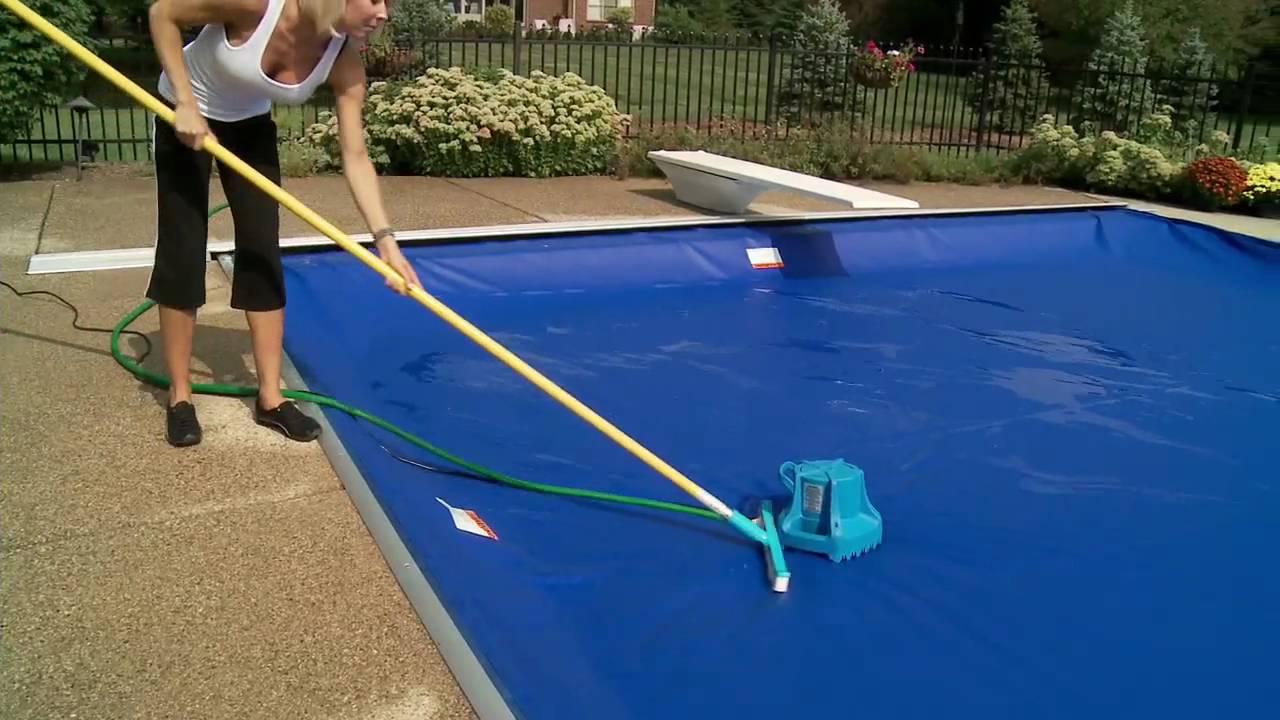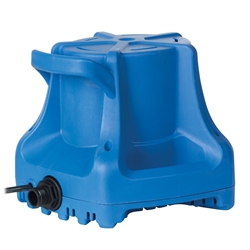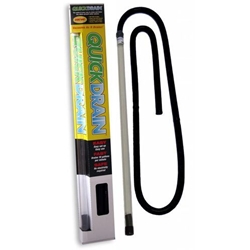Routine upkeep and maintenance of your backyard swimming pool is essential to its longevity and security. With fall fast approaching, now is the time to take the necessary steps to winterize your in-ground or above-ground pool.
Using a pool cover is a key part of this process for several reasons. Covering your pool will keep your pool water clean and clear during the winter months by protecting it from debris and damage as well as preventing algae formation when the pool is not in use. Winter pool covers also allow you to keep your water level mostly filled during the off-season. This helps prevent damage to plumbing in an in-ground pool or structural damage to an above ground pool.
Keeping Your Pool Cover Clean
Just as your pool needs to be properly maintained, so does your pool cover. Many pool owners are all too familiar with the puddles of water that form on their pool covers and never seem to go away. Leaving a large accumulation of rainwater on your cover for a long time can cause a host of problems. The weight of standing water on the pool cover can reduce the lifespan and potentially cause the cover damage. These puddles also are a magnet for dirt and leaves, and in places where winter temperatures stay above 32 degrees they can be a breeding ground for bacteria and mosquitoes that can carry diseases such as West Nile and the Zika virus.
Removing the cover come springtime without eliminating the standing water can be difficult. The dirty winter water and debris can end up spilling into your pool water, costing you time and money for additional chemicals. Fortunately, using a pool cover pump is an easy way to tackle the problem.
How to Choose a Pool Cover Pump
A swimming pool cover pump quickly and efficiently removes water from the cover. There are two basic types of pool cover pumps: automatic and manual. Both types are compact and lightweight and attach easily to your garden hose to pump the water off the cover and away from your house, yard and pool. Automatic pool cover pumps need to be plugged into an electrical outlet.
Choose a pool cover pump based on the type and size of pool you have (above ground or in-ground). Manual pool cover pumps work well for homeowners who are diligent about pool maintenance chores, but for most everyone else, an automatic pool cover pump is the best choice. Regardless of which type you choose, a pool cover pump can serve double-duty and be used to pump water out of basements, boats, spas and other places with unwanted standing water.
Automatic Pool Cover Pumps
 Automatic pool cover pumps are electric and have an automatic on/off switch. When water is detected on the surface of the pool cover, the pump turns on automatically to remove the water. When the cover is dry, the pump turns itself off.
Automatic pool cover pumps are electric and have an automatic on/off switch. When water is detected on the surface of the pool cover, the pump turns on automatically to remove the water. When the cover is dry, the pump turns itself off.
Automatic pool cover pumps can pump anywhere from 250 to 2,500 gallons of water per hour (GPH). The larger the pool, the higher capacity pump is required. Many automatic pool cover pumps can be fully submerged in water and will collect leaves and debris from the cover in addition to pumping water.
Advantages of Automatic Pumps
- Higher capacity and faster pumping Required for in-ground pools and larger above-ground pools.
- Safer for homes with children and pets Eliminates puddles from accumulating on pool covers which are a potential drowning hazard.
- Continuous protection Removes heavy water before it can damage the pool cover and/or pull an unanchored cover into the pool.
Manual Pool Cover Pumps
 This type of pump needs to be physically turned off and on. Some manual pool cover pumps are hand-operated and use the power of water pressure to remove standing water, instead of electricity or batteries. Manual pool cover pumps drain about 200 GPH and are recommended for smaller above-ground pools or spas.
This type of pump needs to be physically turned off and on. Some manual pool cover pumps are hand-operated and use the power of water pressure to remove standing water, instead of electricity or batteries. Manual pool cover pumps drain about 200 GPH and are recommended for smaller above-ground pools or spas.
Advantages of Manual Pumps:
- Less expensive
- Lightweight and very portable
- Smaller size Good for most above-ground pool and spa covers; also useful for emptying spas and hot tubs.
More Pool Cover Maintenance Tips
In addition to using your pool cover pump to remove standing water, take the time to give your pool cover some TLC. Make sure that your pool cover is properly in place to protect your swimming pool. Follow the manufacturers instructions for installing and securing the cover on your above-ground or in-ground pool. Eliminating debris will prevent your pool cover from being ripped, torn or otherwise damaged during the winter months. Scoop out leaves and branches each week and allow the cover to dry to kill bacteria and mosquito larvae. Keeping the pool area clean will also help, so sweep the patio or walkways, trim bushes and hedges, and dispose of fallen branches in the vicinity.
Winterizing your swimming pool with a cover and pool cover pump will provide protection all winter and simplify your pool opening process next spring. To learn more, check out Winterizing a Pool? Don’t Let It Become a Breeding Ground for Mosquitoes or shop all of our pool cover pumps.




Maria
Is it bad to keep the pump on a solid safety cover all season? When it sows is it safe to have the snow cover the pump? Does the weight of the pump stretch or leave an indentation on the solid cover